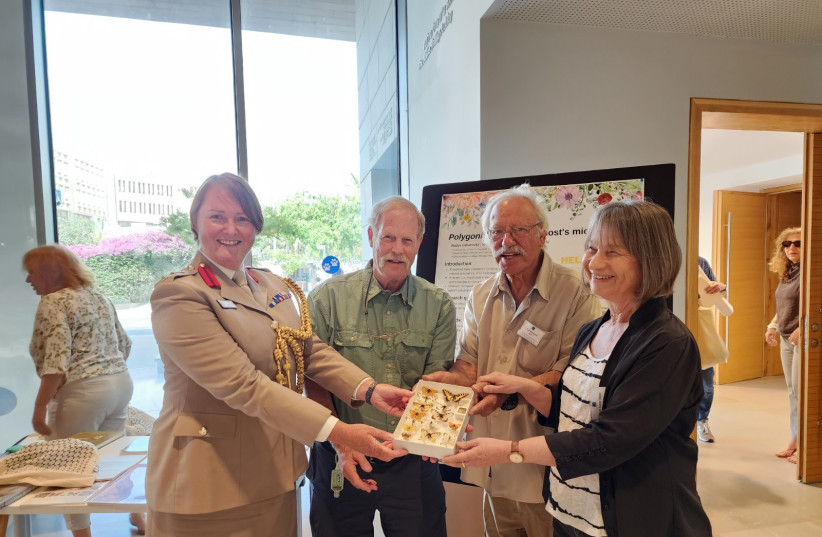A 160-year-old box of Tristram-Cambridge butterflies collected in what was once Ottoman Palestine between 1863 to 1865 has been donated to the national collections of Tel Aviv University’s Steinhardt Museum.
The occasion was the Fourth International Congress of Middle Eastern Butterflies, which was held at TAU’s museum and led by the Israel Lepidopterists Society and donated by Oxford University’s Natural History Museum.
The 160-year-old butterfly box, whose items were collected by the Anglican Church’s delegations to the Holy Land, was presented by Col. Joe Burgon, the military attaché of the British Embassy in Israel, and Dubi Binyamini, president of Israel Lepidopterists Society, to Prof. Tamar Dayan, chair of the Steinhardt Museum.
The historic butterflies – that when alive look like self-propelled flowers – were collected during the period of Ottoman rule in Israel by two delegations of the Anglican Church: one led by Henry Baker Tristram and the other led by Octavius Picard-Cambridge.
The specimens were kept in Oxford University’s Natural History Museum and were discovered by Dubi Binyamini, president of the Butterfly Association in Israel, which is celebrating its 40th anniversary this year.
Binyamini visited the museum in Oxford to review especially large butterflies of the Archon Apollinus (or False Apollo) species that he saw around Beersheba. This species of butterflies was mentioned as the type collected in the southern Gaza Strip on the Sinai border in the essay by Major Graves published in 1925 about butterflies of Israel and Jordan that contains a detailed list of 80 species of butterflies collected by 14 entomologists – most of them officers in the service of the British Mandate that ruled Israel at the time.
Collected in the Ottoman era
Binyamini says that during his visit to the Oxford Museum, he saw a strange note on one of the items: “Tristram-Cambridge 1863-1865.” After checking with the curator of the museum’s collections, Dr. James Hogan, he learned that in the 19th century, there were two expeditions of the Anglican Church to the Holy Land that collected a variety of local animals; they concentrated on birds, mollusks and spiders, and some butterflies that were kept in the museum in Oxford, but until Binyamini's visit to the museum, no one noticed this treasure.
Following this discovery, he began to check the details in the British collection, and in four more visits, he was able to locate in the museum’s collections a total of 113 specimens representing 51 butterfly species. At the end of his research, Binyamini turned to the museum management in Oxford and asked them to donate one of the boxes of the Tristram-Cambridge collection to the Steinhardt Museum – and they agreed.
The Steinhardt Museum of Natural History is a national, non-profit organization operating under the auspices of the Israel Academy of Sciences and Humanities, a national research infrastructure recognized by the National Council for Research and Development and a Knowledge Center for Biology, Environment, and Agriculture recognized by the Ministry of Science and Technology and the Planning and Grants Committee of the Council of Higher Education.
Collected over decades, the Steinhardt Museum collections include some six million items that document the fauna and flora of the Eastern Mediterranean in the past century, alongside the history and development of the human species. They are used for academic and applied research, as well as public education.
Hundreds of scientists and professionals from Israel and overseas use these collections every year to conduct research and develop knowledge and tools for the management and conservation of ecosystems, as well as the sustainable utilization of natural resources. More than 100 research students use the collection annually for their master’s of science and doctoral projects.

